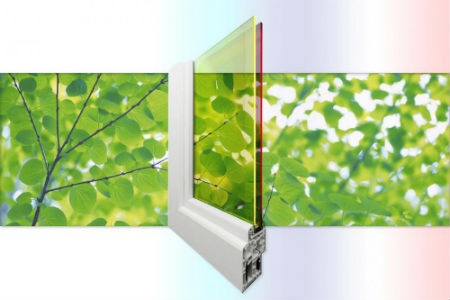|
NOVIDADES
Using two types of "designer" quantum dots, researchers are creating double-pane solar windows that generate electricity with greater efficiency and create shading and insulation for good measure. It's all made possible by a new window architecture which utilizes two different layers of low-cost quantum dots tuned to absorb different parts of the solar spectrum. "Because of the the strong performance we can achieve with low-cost, solution-processable materials, these quantum-dot-based double-pane windows and even more complex luminescent solar concentrators offer a new way to bring down the cost of solar electricity," said lead researcher Victor Klimov. "The approach complements existing photovoltaic technology by adding high-efficiency sunlight collectors to existing solar panels or integrating them as semitransparent windows into a building's architecture."
 Researchers at Los Alamos National Laboratory are creating double-pane solar windows that generate electricity with greater efficiency and also create shading and insulation. It's all made possible by a new window architecture which utilizes two different layers of low-cost quantum dots tuned to absorb different parts of the solar spectrum. The approach complements existing photovoltaic technology by adding high-efficiency sunlight collectors to existing solar panels or integrating them as semitransparent windows into a building's architecture. Credits: DOE/Los Alamos National Laboratory
To achieve this, the Los Alamos team incorporates into quantum dots ions of manganese that serve as highly emissive impurities. Light absorbed by the quantum dots activates these impurities. Following activation, the manganese ions emit light at energies below the quantum-dot absorption onset. This trick allows for almost complete elimination of losses due to self-absorption by the quantum dots. To transform a window into a tandem luminescent sunlight collector, the Los Alamos team deposits a layer of highly emissive manganese-doped quantum dots onto the surface of the front glass pane and a layer of copper indium selenide quantum dots onto the surface of the back pane. The front layer absorbs the blue and ultraviolet portions of the solar spectrum, while the rest of the spectrum is picked up by the bottom layer. Following absorption, the dot re-emits a photon at a longer wavelength, and then the re-emitted light is guided by total internal reflection to the glass edges of the window. There, solar cells integrated into the window frame collect the light and convert it to electricty. DOE/Los Alamos National Laboratory. Posted: Jan 02, 2018. Assuntos Conexos: |
|||||||||||||||||||||||||